Artificial Intelligence (AI) has experienced a massive shift over the past few decades. While neural networks and deep learning dominate the headlines, there is still an urgent need for AI systems that can explain their decisions in a transparent way.
Most deep learning models are powerful but often operate as “black boxes,” making it hard to understand why they make certain predictions.
This is where Inductive Logic Programming (ILP) enters the picture. ILP belongs to the symbolic AI family, a branch of artificial intelligence that emphasizes logic, reasoning, and explainability.
Unlike purely statistical approaches, ILP allows machines to learn logical rules from examples and prior knowledge, producing models that are both powerful and human-readable.
In this guide, we’ll explore what ILP is, how it works, its history, key concepts, real-world examples, applications, and its role in the future of explainable AI.
What is Inductive Logic Programming? (Expanded)
Inductive Logic Programming (ILP) is a branch of machine learning that combines two important areas of computer science:
- Induction – the process of learning general rules from specific examples.
- Logic Programming – the use of formal logic (often first-order logic, as in Prolog) to represent knowledge and perform reasoning.
In simple terms, ILP is about teaching computers to learn rules in the form of logical statements from structured data and prior knowledge. Instead of producing opaque statistical models, ILP outputs human-readable rules such as:
grandparent(X, Y) :- parent(X, Z), parent(Z, Y).
This rule says that X is a grandparent of Y if X is a parent of Z and Z is a parent of Y. It is transparent, interpretable, and verifiable, unlike the hidden layers of a deep neural network.
Core Idea Behind ILP
The main goal of ILP is to induce a hypothesis (H), expressed as logic rules, that explains a given set of observations (O) while being consistent with existing background knowledge (B).
Formally, ILP seeks a hypothesis H such that:
- B ∧ H ⊨ O (the background knowledge plus the hypothesis entails the observations)
- B ∧ H is consistent (does not lead to contradictions).
This logical foundation ensures that ILP-generated models are not only correct with respect to the data but also logically sound.
How ILP Differs from Other Machine Learning Approaches
| Aspect | Traditional ML (e.g., Neural Networks) | Inductive Logic Programming |
| Model Output | Numbers, weights, probabilities | Logic rules (if–then style) |
| Interpretability | Low (black-box) | High (transparent rules) |
| Data Type | Numerical, unstructured | Structured, symbolic |
| Use Cases | Image recognition, speech, predictions | Knowledge reasoning, explainable AI |
Unlike deep learning, ILP shines in domains where knowledge representation and reasoning are as important as prediction accuracy.
Inputs and Outputs of ILP
ILP systems typically require three components:
- Positive and Negative Examples
- Positive examples are instances the system should learn to explain (e.g., parent(alice, bob)).
- Negative examples are counterexamples that the hypothesis must avoid (e.g., parent(alice, charlie) if that’s false).
- Background Knowledge
- Prior knowledge expressed in logical facts or rules.
- Example: mother(X, Y) → parent(X, Y).
- Inductive Process (Hypothesis Generation)
- An ILP algorithm uses the examples and background knowledge to form new rules.
- The generated hypothesis is expressed as logic clauses, which humans can interpret.
Output: A set of logical rules (hypotheses) that explain the examples and can generalize to new cases.
A Simple Example
Let’s say we want an ILP system to learn about family relationships:
- Positive examples:
- parent(alice, bob).
- parent(bob, charlie).
- Negative example:
- parent(alice, charlie).
- Background knowledge:
- mother(X,Y) → parent(X,Y).
- ILP Output Hypothesis:
- ancestor(X, Y) :- parent(X, Y).
ancestor(X, Y) :- parent(X, Z), ancestor(Z, Y).
- ancestor(X, Y) :- parent(X, Y).
Here, the system has induced the definition of “ancestor” from a few simple parent relationships — something that resembles human logical reasoning.
Why ILP Matters
ILP is significant because:
- It produces explainable rules, essential for trustworthy AI.
- It integrates domain expertise with data-driven learning.
- It generalizes knowledge in a human-readable form, enabling collaboration between AI systems and experts.
- It provides a foundation for Explainable AI (XAI) and neuro-symbolic AI, where logic meets deep learning.
History and Origins of Inductive Logic Programming (ILP)
The story of Inductive Logic Programming (ILP) sits at the intersection of two long traditions in computer science: logic programming and machine learning. To understand ILP’s origins, it’s useful to look at how these two fields evolved and eventually merged.
Early Foundations in Logic and AI (1950s–1970s)
- Logic in AI: From the very beginning of artificial intelligence, researchers were fascinated by the idea of using formal logic to represent knowledge and reason about the world. Alan Turing’s ideas about mechanical reasoning and John McCarthy’s development of formal logic-based AI systems laid the groundwork.
- Logic Programming: In the 1970s, Prolog (Programming in Logic) was developed by Alain Colmerauer and Robert Kowalski. Prolog quickly became the dominant language for symbolic AI, allowing problems to be expressed as logical rules and solved using automated reasoning.
This era was dominated by symbolic approaches to AI, which emphasized reasoning and explicit knowledge representation.
Rise of Machine Learning and Induction (1970s–1980s)
- During the 1970s and 1980s, the field of machine learning began focusing on algorithms that could learn from examples. Approaches like decision trees, rule induction, and pattern recognition became popular.
- The concept of induction — generalizing from specific examples to broader rules — was central to this effort. Researchers explored how computers could move from raw data to general principles in a way that mimicked human reasoning.
This created a natural tension: machine learning was becoming more statistical, while logic programming was rooted in symbolic reasoning.
Birth of ILP (Late 1980s–1990s)
The two traditions converged in the late 1980s and early 1990s with the work of Stephen Muggleton, a British computer scientist who is often credited as the father of ILP.
- 1987–1990: Researchers began experimenting with combining inductive learning techniques and logic programming frameworks. Early systems demonstrated that logic could be used as a hypothesis language for machine learning.
- 1991: Stephen Muggleton formally coined the term “Inductive Logic Programming” at a workshop and later in influential papers. He emphasized ILP as the “intersection of machine learning and logic programming.”
- Early ILP Systems: Programs like FOIL (First Order Inductive Learner), developed by J. Ross Quinlan in 1990, and later ILP systems such as Progol (developed by Muggleton in 1995), showcased how ILP could scale to real-world problems.
This period marked ILP as a formal discipline, attracting researchers interested in symbolic learning, reasoning, and applications in knowledge-rich domains.
Growth and Applications (1990s–2000s)
In the 1990s and early 2000s, ILP found success in several application areas:
- Bioinformatics and Drug Discovery: ILP was used to predict protein structures and discover molecular interactions.
- Natural Language Processing: Early work applied ILP to grammar induction and semantic analysis.
- Data Mining: ILP helped extract relational patterns from structured datasets, a precursor to today’s relational learning methods.
Academic conferences such as ILP Workshops (later ILP Conferences) became the main venues for advancing the field, fostering collaboration among researchers worldwide.
ILP in the Era of Deep Learning (2010s–Present)
- As deep learning rose to prominence in the 2010s, ILP and other symbolic approaches lost visibility. Neural networks proved superior in handling large-scale, unstructured data like images and text.
- However, the black-box nature of deep learning revived interest in ILP. Since ILP produces explainable, rule-based models, it aligns with the growing need for Explainable AI (XAI).
- Researchers began combining ILP with neural methods, leading to neuro-symbolic AI, which seeks to merge pattern recognition (neural nets) with reasoning (ILP).
Key Milestones in ILP’s Development
- 1970s: Development of Prolog and logic programming.
- 1980s: Emergence of inductive learning methods in AI.
- 1991: Term “Inductive Logic Programming” introduced by Stephen Muggleton.
- 1990s: Early ILP systems like FOIL and Progol developed.
- 2000s: Widespread applications in bioinformatics, NLP, and data mining.
- 2010s: Decline in popularity due to deep learning, but renewed interest through XAI.
- 2020s: Rise of neuro-symbolic AI puts ILP back in focus as a way to create interpretable, hybrid AI systems.
Legacy and Importance
ILP’s legacy lies in its ability to blend learning with reasoning, creating AI systems that are not only effective but also transparent. By integrating examples with background knowledge, ILP bridged the gap between data-driven learning and knowledge-based reasoning — a challenge that remains central to AI research today.
Also Read: Top Frameworks for JavaScript App Development in 2025
How Inductive Logic Programming Works
At its core, Inductive Logic Programming (ILP) is about learning general logical rules from specific examples, with the help of background knowledge. The process involves both machine learning techniques (to induce patterns) and logic programming (to represent and test those patterns).
Unlike statistical machine learning, which learns correlations in numerical data, ILP works with structured, symbolic representations — usually expressed in first-order logic.
The ILP Workflow
The ILP process can be broken down into four main steps:
- Input Data: Examples
- ILP starts with positive and negative examples.
- Positive examples show what should be true, while negative examples show what should not be true.
- Background Knowledge
- Pre-existing facts, rules, or domain knowledge are provided in logical form.
- This knowledge helps guide learning and limits the search space.
- Hypothesis Generation (Learning Phase)
- The ILP algorithm searches for general hypotheses (rules) that explain all positive examples and reject negative ones.
- The search space can be vast, so ILP uses biases (constraints) to narrow possibilities.
- Testing and Refinement
- The generated rules are tested against the dataset.
- If the rules are too broad (overgeneralization) or too narrow (overfitting), they are refined until a consistent, useful hypothesis is formed.
Formal Representation
Formally, ILP aims to find a hypothesis (H) such that:
- B ∧ H ⊨ E → The combination of background knowledge (B) and hypothesis (H) logically entails the examples (E).
- B ∧ H is consistent → The hypothesis does not contradict known facts.
This ensures the learned rules are both valid and logically sound.
Example: Learning Family Relationships
Let’s walk through a simple ILP example:
- Positive examples:
- parent(alice, bob).
parent(bob, charlie).
- parent(alice, bob).
- Negative example:
- parent(alice, charlie).
- Background knowledge:
- mother(X, Y) :- parent(X, Y).
ILP Process
- From the examples, ILP notices patterns in relationships.
- It proposes hypotheses like:
ancestor(X, Y) :- parent(X, Y).
ancestor(X, Y) :- parent(X, Z), ancestor(Z, Y).
- This rule states that someone is an ancestor if they are a parent, or if they are a parent of someone who is an ancestor.
The system has “discovered” the ancestor rule purely by induction from examples, a generalization beyond the initial training facts.
Key Mechanisms in ILP
- Hypothesis Space
- The set of all possible rules the system could generate.
- Example: “Every parent is an ancestor” vs. “Every parent of a parent is a grandparent.”
- Bias and Constraints
- ILP uses restrictions to avoid meaningless rules.
- Example: Limiting variables so rules must involve known predicates (like parent, ancestor).
- Search Strategies
- Top-Down Search: Start with the most general rule and specialize it until it fits the data.
- Bottom-Up Search: Start with specific examples and generalize them into broader rules.
- Evaluation Metrics
- ILP systems measure the accuracy of rules by how many positive examples are covered and how many negative examples are excluded.
ILP Algorithm Examples
Some of the most influential ILP systems implement these ideas differently:
- FOIL (First Order Inductive Learner, 1990): Builds rules in first-order logic using a greedy, top-down approach.
- Progol (1995, Stephen Muggleton): Uses inverse entailment, balancing expressiveness with efficiency.
- Aleph (2000s): A popular open-source ILP framework used for research.
Each algorithm refines hypotheses using slightly different strategies but follows the same ILP principle: learn rules that explain examples with logic.
Advantages of the ILP Process
- Produces human-readable rules.
- Incorporates domain knowledge easily.
- Generalizes well from small datasets compared to black-box models.
- Works naturally with relational and structured data.
Limitations in Practice
While ILP is powerful, the process has challenges:
- Scalability: Searching hypothesis space is computationally expensive.
- Noisy Data: ILP struggles if examples are incomplete or contradictory.
- Complexity: Rules can become overly complex without proper constraints.
Visualizing ILP
A simple way to visualize the ILP workflow is:
Examples + Background Knowledge → ILP Algorithm → Hypotheses (Rules)
This pipeline demonstrates how ILP transforms raw data into logical explanations rather than opaque statistical outputs.
Key Concepts in Inductive Logic Programming (ILP)
To understand how Inductive Logic Programming (ILP) works in practice, it’s important to break down its core concepts. These ideas define how ILP systems learn rules from examples and why they are different from other machine learning approaches.
Hypothesis Space
The hypothesis space is the set of all possible rules (hypotheses) that an ILP system could generate to explain the data.
- General Hypotheses: Very broad rules that explain many examples, but risk including false ones.
- Example: “Everyone is a parent of everyone else.” (too general, covers false cases).
- Specific Hypotheses: Narrow rules that fit only the given data but don’t generalize well.
- Example: “Alice is the parent of Bob.” (true, but not useful for general reasoning).
ILP systems aim to find a balanced hypothesis — general enough to cover unseen cases, but specific enough to remain accurate.
Bias in ILP
In machine learning, bias refers to assumptions that restrict what hypotheses are considered valid. In ILP, bias is essential because the hypothesis space can be infinite.
Types of bias:
- Language Bias: Limits the form of rules (e.g., only use specific predicates like parent or ancestor).
- Search Bias: Determines the order in which hypotheses are explored (e.g., preferring simpler rules before complex ones).
Without bias, ILP could generate meaningless rules or waste computation exploring irrelevant possibilities.
Mode Declarations
- Mode declarations are instructions that guide ILP algorithms about how variables can be used in rules.
- They define what kinds of input and output arguments are allowed for predicates.
- Example:
- modeh(1, ancestor(+person, -person)). → The head of a rule defines an ancestor relationship with input/output roles.
- modeb(1, parent(+person, -person)). → The body of a rule may use the parent relationship.
This ensures ILP generates logical and valid rules instead of random or nonsensical ones.
Search Strategies
Since ILP explores possible hypotheses in a huge search space, it relies on search strategies:
- Top-Down Search
- Starts with the most general hypothesis (e.g., “everyone is related to everyone”).
- Specializes rules step by step until they fit the data.
- Example: narrowing “X is related to Y” into “X is a parent of Y.”
- Bottom-Up Search
- Starts with specific examples.
- Generalizes them into broader rules.
- Example: seeing parent(alice, bob) and parent(bob, charlie), and generalizing to “X is a parent of Y.”
Most ILP systems combine both approaches to balance efficiency and accuracy.
Generalization and Specialization
ILP systems constantly move between two operations:
- Generalization: Making rules more inclusive.
- Example: From “Alice is the parent of Bob” to “X is a parent of Y.”
- Specialization: Making rules more restrictive.
- Example: From “X is a parent of Y” to “X is a mother of Y.”
This iterative process helps ILP refine hypotheses until they fit the data well.
Positive and Negative Examples
Examples are the foundation of ILP learning:
- Positive examples: Instances the hypothesis should explain.
- Example: parent(alice, bob).
- Negative examples: Instances the hypothesis must exclude.
- Example: parent(alice, charlie).
By balancing both, ILP avoids overgeneralizing and learns rules that are both correct and discriminative.
Evaluation Functions
ILP uses evaluation measures to decide how “good” a hypothesis is. Common evaluation criteria include:
- Coverage: How many positive examples does the hypothesis explain?
- Consistency: Does the hypothesis exclude negative examples?
- Simplicity: Does the rule avoid unnecessary complexity?
These criteria ensure ILP finds useful and elegant rules instead of overfitting.
Example of Concepts in Action
Suppose we want ILP to learn the concept of grandparent:
- Positive examples:
- grandparent(alice, charlie).
- grandparent(john, emma).
- Negative examples:
- grandparent(bob, charlie).
- Background knowledge:
- parent(alice, bob).
- parent(bob, charlie).
- parent(john, mary).
- parent(mary, emma).
ILP Process
- Hypothesis space: All possible rules about family relations.
- Bias: Only consider rules using parent as a base predicate.
- Mode declarations: Define how grandparent and parent can be used.
- Search:
- Top-down → Start with “everyone is a grandparent.”
- Bottom-up → Build from “Alice is a grandparent of Charlie.”
- Final rule learned:
- grandparent(X, Y) :- parent(X, Z), parent(Z, Y).
This shows how ILP concepts interact to produce a clear, logical, and generalizable rule.
Examples of Inductive Logic Programming in Action
ILP excels in domains where data can be represented logically. Here are some illustrative cases:
| Input Data | Background Knowledge | ILP Output Rule |
| parent(alice, bob), parent(bob, charlie) | ancestor(X,Y) :- parent(X,Y) | ancestor(alice, charlie). |
| molecule(A), atom(B), contains(A,B) | toxic(M) :- molecule(M), contains(M,atomC). | Predicts molecule toxicity |
| sentence(“The cat sleeps”) | noun(cat), verb(sleeps) | grammar_rule(S → NP VP) |
These examples highlight how ILP moves from structured examples → human-readable rules.
Also Read: Top 5 Next.js Alternatives Developers Should Explore in 2025
Applications of Inductive Logic Programming (ILP)
Inductive Logic Programming is not just a theoretical concept; it has been applied in real-world domains where structured data, prior knowledge, and explainability are crucial. Unlike deep learning, which excels at handling raw images or text, ILP thrives in knowledge-rich environments where symbolic reasoning is essential.
Here are the major application areas of ILP:
Artificial Intelligence and Machine Learning
- Rule Learning: ILP is widely used to learn symbolic rules that define relationships within data. These rules are interpretable and can be validated by humans.
- Knowledge Discovery: By combining background knowledge with examples, ILP can uncover hidden logical structures in data.
- Explainable AI (XAI): Since ILP produces human-readable rules, it provides transparency, helping AI systems explain why a decision was made.
- Example: ILP can learn logical rules for game strategies in chess or Go, providing insights into moves rather than just numerical probabilities.
Knowledge Representation and Reasoning
One of ILP’s strengths is its ability to extend existing knowledge bases with new logical rules.
- Ontology Learning: ILP can automatically expand ontologies by learning new relationships.
- Reasoning Systems: It helps in building expert systems that reason with facts and rules.
Example: In legal AI, ILP can learn patterns from past court cases and generalize legal principles in the form of logic rules, aiding decision support systems.
Bioinformatics and Drug Discovery
ILP has made significant contributions to life sciences, where data is structured and domain knowledge is essential.
- Protein Function Prediction: ILP can learn rules about amino acid sequences and protein structures.
- Drug Interaction Discovery: By analyzing chemical structures, ILP can generate hypotheses about which molecules may have therapeutic or toxic effects.
- Gene Regulatory Networks: ILP helps identify logical patterns in gene interactions.
Example: In drug design, ILP has been used to predict whether a new compound might bind to a receptor, aiding faster and explainable drug discovery.
Natural Language Processing (NLP)
Language is inherently structured, making ILP useful in NLP applications.
- Grammar Induction: ILP can infer grammar rules from example sentences.
- Semantic Parsing: ILP helps in mapping natural language sentences into logical representations.
- Information Extraction: It can identify relationships (like “person → works at → company”) from structured text.
Example: Given annotated sentences, ILP can learn rules for syntactic structures like noun phrases and verb phrases, making grammar-based NLP interpretable.
Robotics and Automated Planning
ILP supports robotics by providing logical rules for action models and planning.
- Learning Action Models: Robots can learn rules about cause and effect (e.g., “If I push an object, it moves”).
- Task Planning: ILP helps generate plans that are logical and reusable.
- Explainability in Robotics: Unlike black-box policies, ILP provides symbolic reasoning that can be checked by humans.
Example: A household robot can learn rules such as “If the door is closed and unlocked, pushing the handle opens it.”
Data Mining and Relational Learning
ILP is especially effective at analyzing relational data where entities are connected.
- Pattern Discovery: Extracting hidden rules from databases.
- Relational Learning: Unlike traditional ML that handles flat tables, ILP works directly on multi-relational databases.
Example: In fraud detection, ILP can discover logical patterns linking customer behavior, transactions, and account relationships.
Explainable AI (XAI) and Ethical AI
As AI adoption grows, so does the demand for explainability. ILP is naturally suited for this role.
- Transparent Decision-Making: ILP generates rules that regulators, businesses, and users can interpret.
- Ethical Compliance: ILP can enforce fairness constraints by making learned rules explicit.
Example: In healthcare, ILP might produce a rule like “A patient is at high risk if they have condition A AND family history B.” Such a rule is easy to validate by doctors, unlike a neural network’s hidden layers.
Scientific Discovery and Hypothesis Generation
Science often requires generating hypotheses from experimental data. ILP can automate this process.
- Physics and Chemistry: Learning rules about physical processes or molecular structures.
- Astronomy: Discovering patterns in large astronomical datasets.
- Environmental Science: ILP can model ecological relationships.
Example: ILP was used in astronomical discovery to generate logical rules about star classification from telescope data.
Hybrid AI: ILP with Deep Learning
The latest wave of AI research combines ILP with neural networks in neuro-symbolic systems.
- Deep Learning for Perception: Neural networks process raw input like images or speech.
- ILP for Reasoning: ILP then reasons about structured knowledge extracted from those inputs.
Example: In visual question answering (VQA), a neural network may detect objects in an image, and ILP can infer relationships like “The cat is on the chair.”
Summary Table: Applications of ILP
| Domain | Use Case | Example Outcome |
| AI & ML | Rule learning, XAI | Explainable strategies in games |
| Knowledge Representation | Ontologies, reasoning | Legal rule extraction |
| Bioinformatics | Protein & drug discovery | Hypotheses about drug toxicity |
| NLP | Grammar induction, semantic parsing | Rules for sentence structures |
| Robotics | Action learning, planning | Robot learns cause-effect rules |
| Data Mining | Relational learning | Fraud detection patterns |
| XAI | Ethical & explainable AI | Transparent healthcare rules |
| Science | Hypothesis generation | Star classification in astronomy |
| Hybrid AI | Neuro-symbolic reasoning | Visual question answering |
Also Read: How to Build High-Performance Apps with Node.js Development Services
Strengths and Limitations of Inductive Logic Programming (ILP)
Like any AI approach, Inductive Logic Programming (ILP) comes with its own set of strengths and weaknesses.
Its rule-based, symbolic learning makes it powerful in domains requiring transparency, reasoning, and structured data, but it also faces challenges in scalability and handling raw, unstructured data.
1. Strengths of ILP
Explainability and Transparency
- ILP produces human-readable rules instead of hidden weights.
- This makes models easy to interpret, audit, and trust.
- Example: In healthcare, ILP might produce a rule like “If patient has symptom A and test result B, then risk of condition C.” Doctors can validate and rely on such rules.
Integration with Background Knowledge
- Unlike many machine learning methods, ILP can combine prior knowledge with data.
- This makes it highly effective in knowledge-rich fields such as bioinformatics, law, and science.
Relational Learning
- ILP can handle multi-relational data, where entities are connected by relationships (e.g., databases, graphs).
- Traditional ML struggles with this, often flattening data and losing structure.
Generalization from Small Data
- ILP can learn meaningful rules from relatively small datasets, as long as background knowledge is available.
- This is useful in domains like scientific discovery, where labeled data is scarce.
Strong in Explainable AI (XAI) and Ethics
- ILP aligns with modern demands for ethical and transparent AI.
- Regulators and businesses can review ILP’s rules, making it suitable for high-stakes decisions (healthcare, finance, law).
2. Limitations of ILP
Scalability Issues
- ILP often struggles with large datasets because the hypothesis search space is huge.
- The computational cost of generating and testing logical rules grows rapidly with data size.
Sensitivity to Noisy or Incomplete Data
- ILP relies heavily on clean, structured examples.
- If data contains errors, missing values, or inconsistencies, ILP may produce incorrect or overly complex rules.
Limited in Handling Unstructured Data
- ILP is not well-suited for raw data like images, audio, or free-form text.
- Deep learning dominates in these areas, while ILP shines only after the data has been structured.
Complexity of Learned Rules
- Without careful constraints, ILP can generate overly complex hypotheses that are hard to interpret.
- This is known as overfitting in logical rule induction.
Lower Popularity Compared to Deep Learning
- Since the 2010s, deep learning has overshadowed ILP in research and industry adoption.
- While ILP is valuable for explainability, it lacks the widespread frameworks and ecosystem that deep learning enjoys.
3. Balanced Perspective
Despite its limitations, ILP remains highly relevant in specific domains where explainability, relational data, and reasoning are more important than raw predictive power. Many researchers are addressing its weaknesses by combining ILP with modern approaches like neural networks (neuro-symbolic AI).
4. Strengths vs. Limitations (Comparison Table)
| Strengths of ILP | Limitations of ILP |
| Produces explainable, human-readable rules | Struggles to scale with very large datasets |
| Can integrate domain knowledge with data | Sensitive to noisy or incomplete data |
| Excels in relational and structured data | Not effective for unstructured data (images, raw text) |
| Learns well from small datasets | Risk of overly complex or overfit rules |
| Supports ethical, transparent AI (XAI) | Less popular and fewer tools compared to deep learning |
Future of Inductive Logic Programming (ILP)
While deep learning currently dominates the AI landscape, the future of Inductive Logic Programming (ILP) is far from obsolete. In fact, ILP is gaining renewed relevance in the age of explainable AI (XAI), ethical AI, and neuro-symbolic computing. As industries demand AI systems that are not just accurate but also transparent, interpretable, and accountable, ILP offers a unique advantage.
Here are the key trends shaping the future of ILP:
ILP and Explainable AI (XAI)
One of the strongest drivers for ILP’s resurgence is the growing focus on explainability.
- Governments and regulators increasingly demand transparent AI models, especially in high-stakes domains like healthcare, law, and finance.
- Unlike black-box neural networks, ILP inherently produces if–then rules that humans can understand.
- Future AI systems may rely on ILP to provide auditable decision-making paths alongside neural models.
Example: In a medical diagnosis system, a neural network may detect patterns in scans, but ILP can generate clear, rule-based explanations like:
“If the patient has symptom A and genetic marker B, then risk of condition C is high.”
Integration with Deep Learning (Neuro-Symbolic AI)
The next frontier for ILP lies in hybrid AI approaches:
- Neural networks excel at perception tasks (images, speech, raw text).
- ILP excels at reasoning, logic, and structured data.
- Combining them creates neuro-symbolic AI — systems that can both “see” and “reason.”
Example: In visual question answering (VQA), a neural network identifies objects in an image, while ILP infers relationships:
“The cat is on the chair, therefore the answer to ‘Where is the cat?’ is ‘on the chair.’”
This synergy ensures ILP remains central to AI’s future development.
Role in Scientific Discovery and Research
ILP is uniquely positioned to support scientific discovery in fields where knowledge representation is as important as raw data.
- Bioinformatics & Genomics: ILP can discover gene interactions or drug properties.
- Physics & Chemistry: Logical rules can describe causal relationships in complex systems.
- Environmental Science: ILP can model ecological patterns or climate interactions.
Future scientific AI platforms may use ILP as a hypothesis generator, providing interpretable insights that guide human researchers.
Ethical and Trustworthy AI
Trust is becoming a cornerstone of AI adoption. ILP contributes by:
- Ensuring ethical compliance (fairness rules can be explicitly encoded).
- Offering traceability (rules can be checked against policies and laws).
- Reducing bias risks (transparent rules make hidden biases easier to detect).
As ethical AI regulations become stricter, ILP could serve as a compliance tool for organizations deploying AI in sensitive industries.
Advancements in ILP Algorithms and Tools
Research is actively improving ILP’s efficiency and scalability:
- New probabilistic ILP models allow ILP to handle uncertainty and noisy data.
- Integration with graph databases enables ILP to work with massive relational datasets.
- Open-source frameworks like Aleph, Progol, and Popper are being modernized for today’s computing environments.
In the future, we may see cloud-based ILP platforms or ILP-as-a-service tools that make it easier for businesses to apply ILP without deep technical expertise.
Potential Application Domains for the Future
- Healthcare AI: Interpretable diagnostic systems and drug discovery.
- Legal Tech: AI that learns and explains legal reasoning.
- Finance: Transparent fraud detection and compliance rule generation.
- Education: Intelligent tutoring systems that reason about student knowledge.
- Robotics: Robots that can explain their actions in logical terms.
These areas benefit not just from accuracy but from clear reasoning, making ILP highly relevant.
Challenges Ahead
For ILP to reach its full potential, it must overcome key obstacles:
- Scalability: Handling large, complex datasets efficiently.
- Integration: Working seamlessly with statistical ML and deep learning models.
- Adoption: Expanding beyond academia into real-world industry applications.
Future research is focused on solving these issues through hybrid systems, parallel computation, and probabilistic reasoning enhancements.
The Road Ahead
The AI community is moving toward systems that combine perception, reasoning, and transparency. ILP fits naturally into this vision, offering the reasoning layer that deep learning lacks.
In the coming years, ILP is likely to:
- Play a central role in neuro-symbolic AI research.
- Become essential for explainable and ethical AI in regulated industries.
- Continue powering scientific discovery by generating interpretable hypotheses.
Bottom Line:
The future of Inductive Logic Programming lies in its ability to bridge the gap between black-box machine learning and human-level reasoning. By making AI systems explainable, trustworthy, and knowledge-driven, ILP is poised to remain a critical part of next-generation artificial intelligence.
Conclusion
Inductive Logic Programming (ILP) is a powerful machine learning approach that blends logic programming with inductive reasoning. Unlike black-box AI models, ILP produces explainable, rule-based hypotheses that humans can interpret and verify.
From bioinformatics to NLP and robotics, ILP has been successfully applied across domains. While it faces scalability challenges, its ability to deliver transparent and trustworthy AI ensures it remains highly relevant.
As AI evolves toward explainability, ILP is poised to play a central role in building knowledge-driven, ethical, and interpretable intelligent systems.














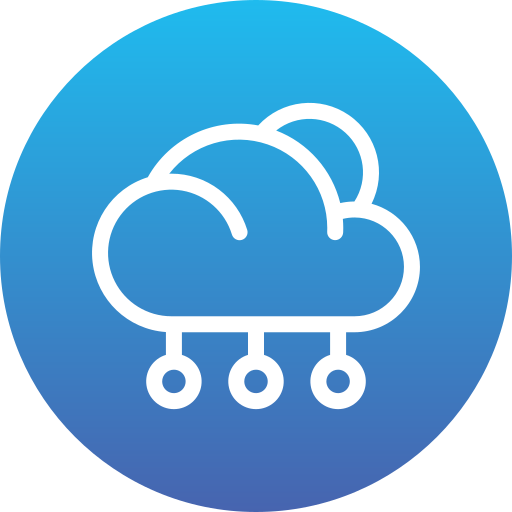
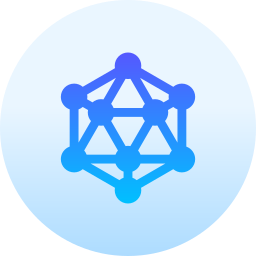
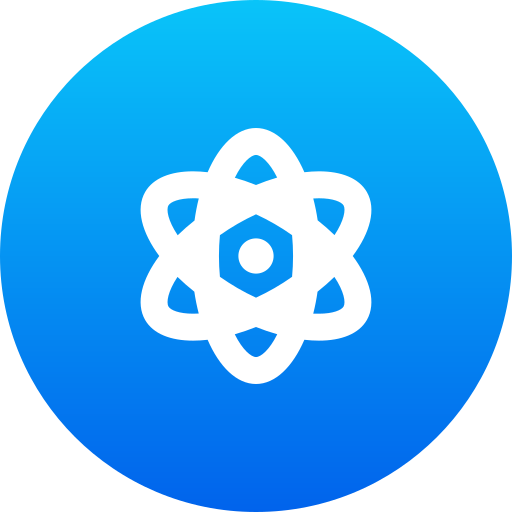


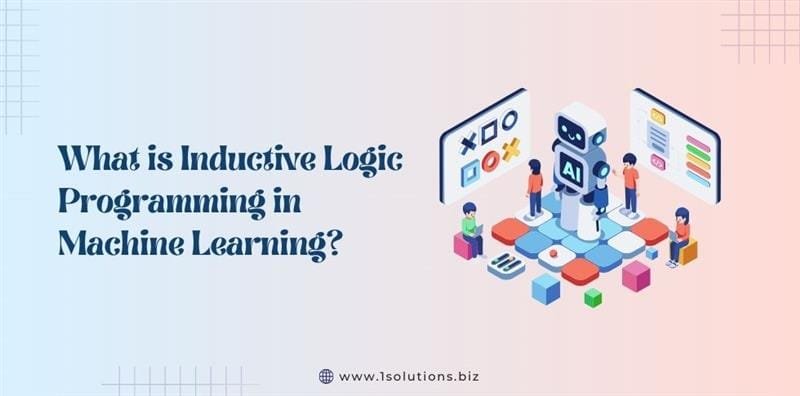
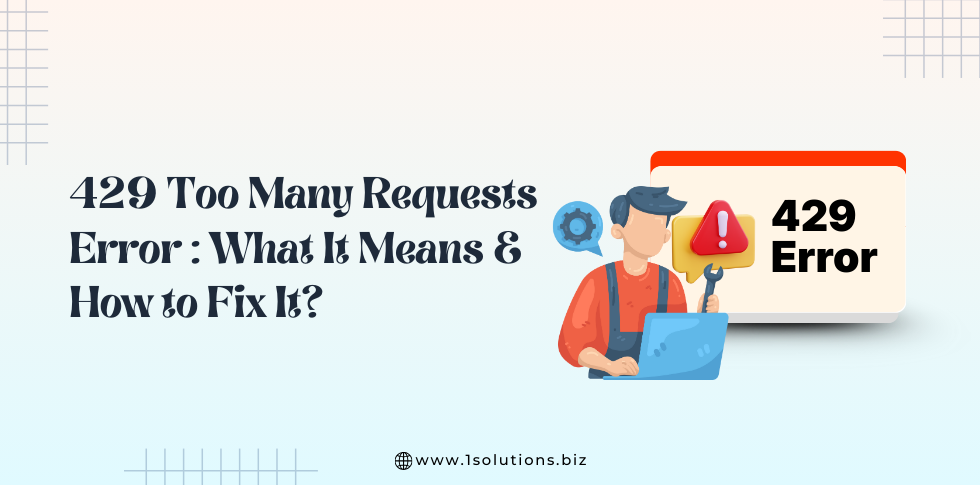

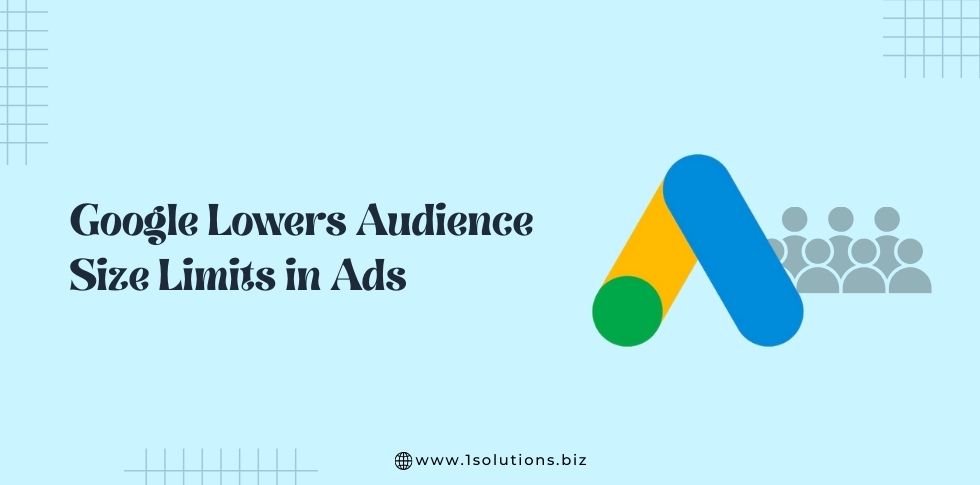

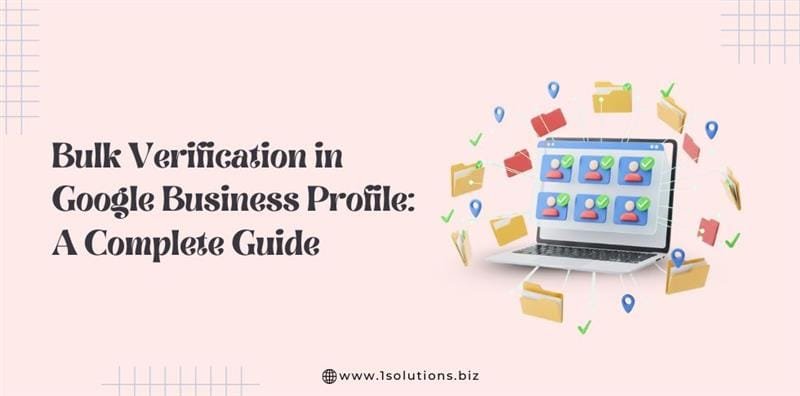
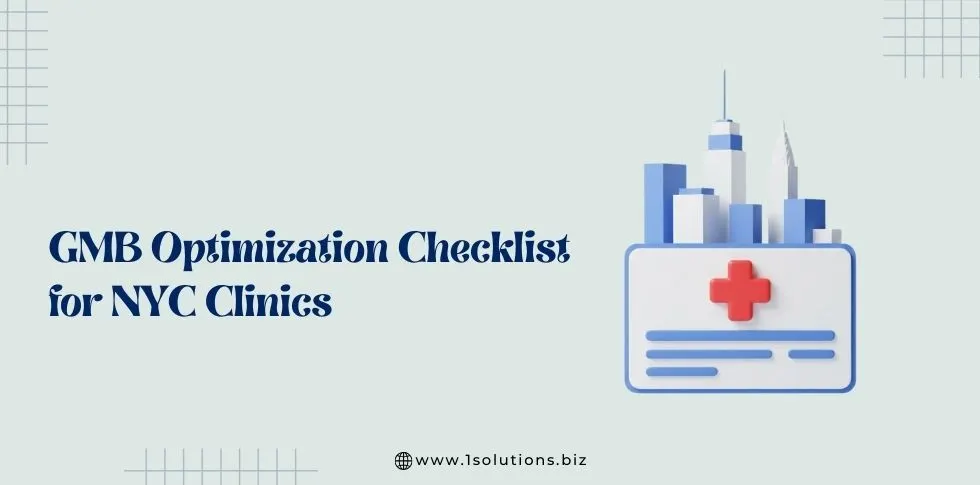
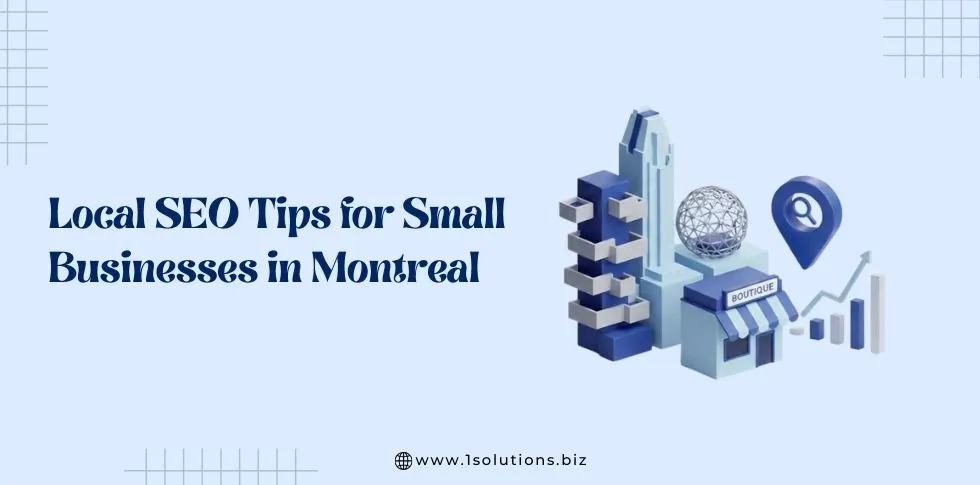
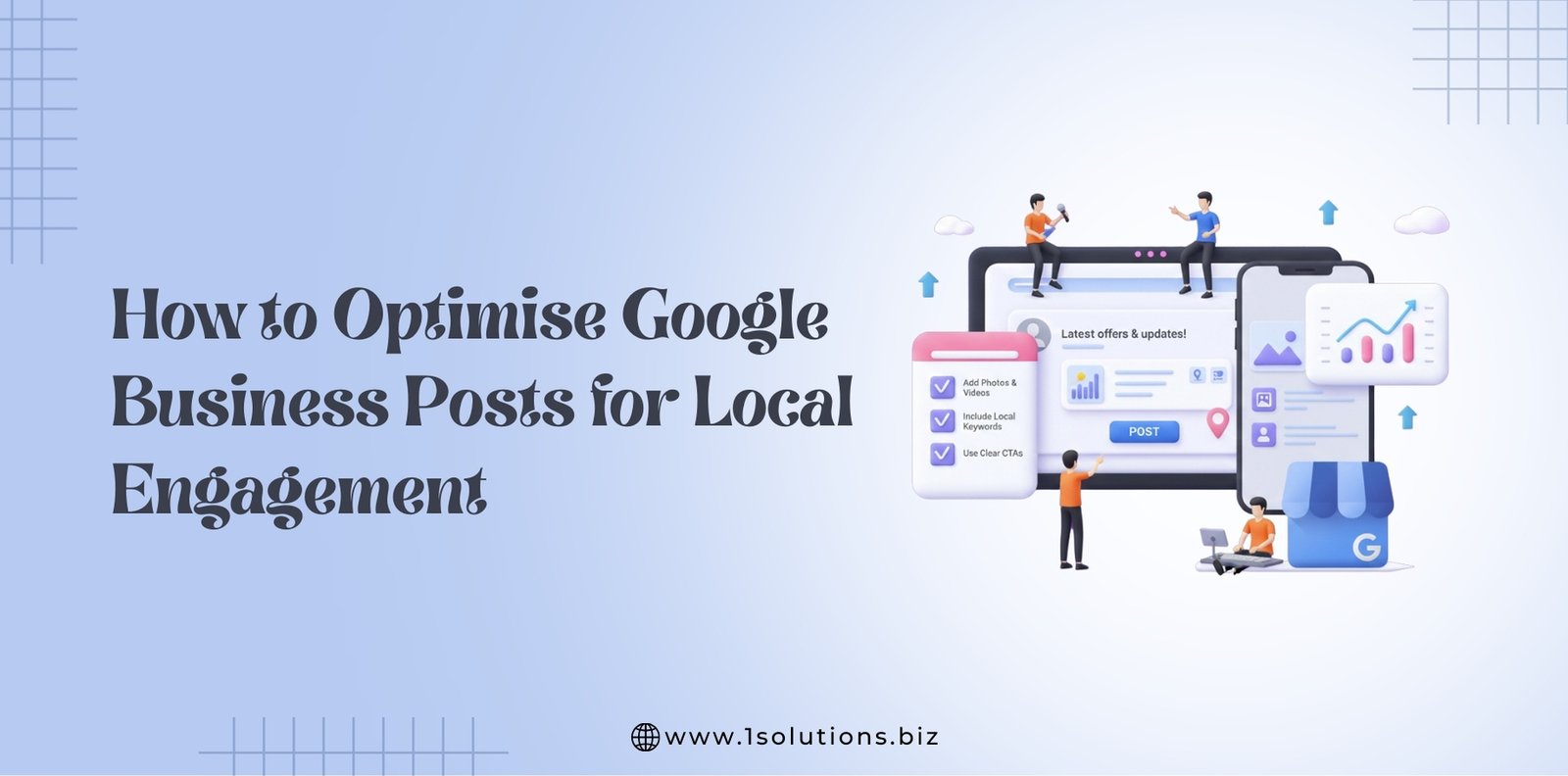




 in India
in India